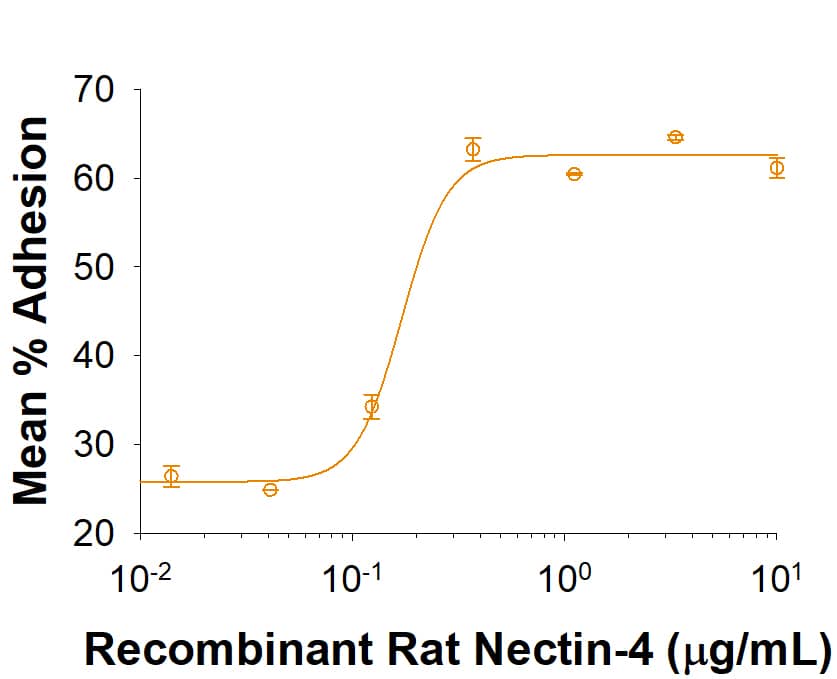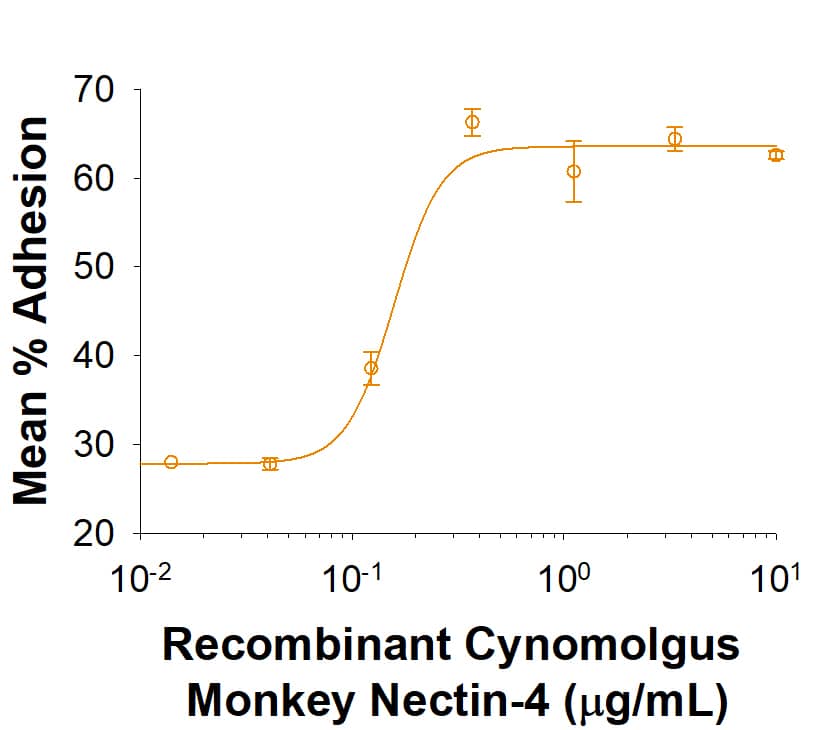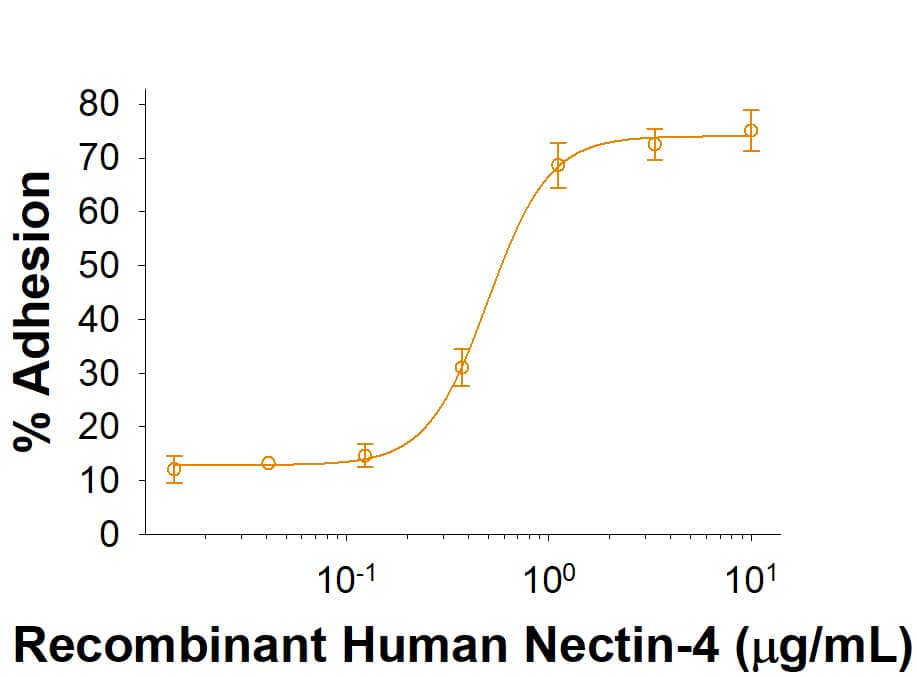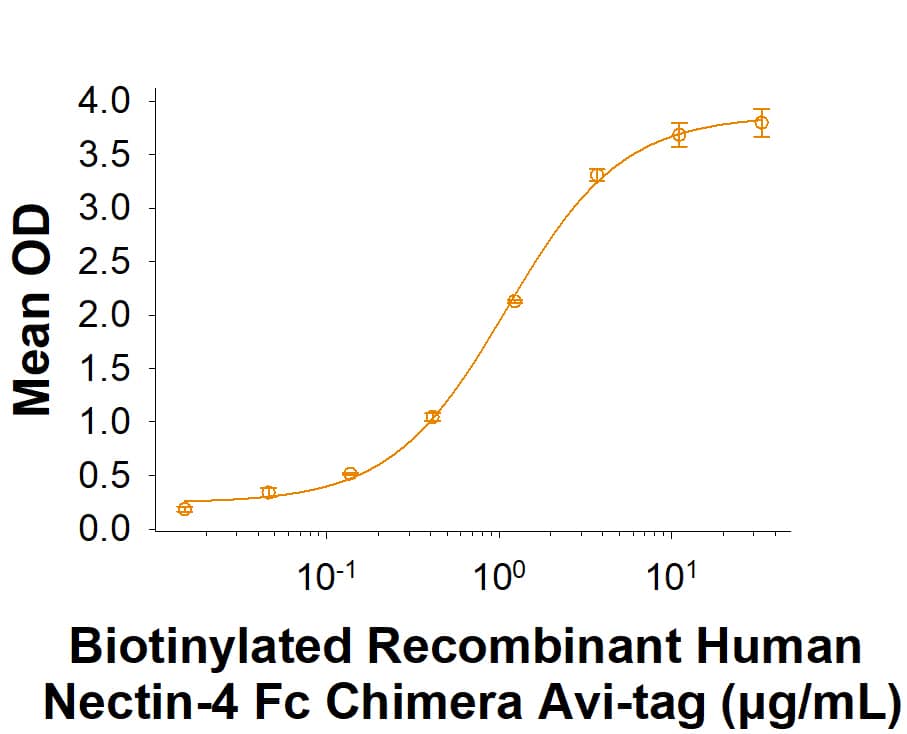Nectin-4: Proteins and Enzymes
Nectins are type I transmembrane glycoproteins that are calcium-independent immunoglobulin (Ig)-like cell adhesion molecules (CAMs). Homology has led to their designation as poliovirus receptor-related (PRR) proteins, but nectins do not bind poliovirus. The extracellular domains of the nectin family form cis-homodimers (same cell), followed by homophilic or heterophilic trans-dimers (across cells) that organize intercellular junctions. Nectin-1, also known as CD111, PRR1 and herpes virus entry mediator C (HVEC) has a secreted splice variant. Nectin-1, Nectin-2 (CD112, PRR2, HVEB) and Nectin-3 (PRR3) are concentrated in adherens junctions and exist on neurons, endothelial cells, epithelial cells and fibroblasts.
Nectin-4 is a type I transmembrane glycoprotein belonging to the Nectin family of Ig superfamily proteins. It is both a homophilic and heterophilic (with Nectin-1) cell adhesion molecule that is expressed in the placenta, the embryo, and in breast carcinoma. A soluble form of Nectin-4 is generated from the membrane protein via the action of TACE/ADAM-17.
7 results for "Nectin-4 Proteins and Enzymes" in Products
7 results for "Nectin-4 Proteins and Enzymes" in Products
Nectin-4: Proteins and Enzymes
Nectins are type I transmembrane glycoproteins that are calcium-independent immunoglobulin (Ig)-like cell adhesion molecules (CAMs). Homology has led to their designation as poliovirus receptor-related (PRR) proteins, but nectins do not bind poliovirus. The extracellular domains of the nectin family form cis-homodimers (same cell), followed by homophilic or heterophilic trans-dimers (across cells) that organize intercellular junctions. Nectin-1, also known as CD111, PRR1 and herpes virus entry mediator C (HVEC) has a secreted splice variant. Nectin-1, Nectin-2 (CD112, PRR2, HVEB) and Nectin-3 (PRR3) are concentrated in adherens junctions and exist on neurons, endothelial cells, epithelial cells and fibroblasts.
Nectin-4 is a type I transmembrane glycoprotein belonging to the Nectin family of Ig superfamily proteins. It is both a homophilic and heterophilic (with Nectin-1) cell adhesion molecule that is expressed in the placenta, the embryo, and in breast carcinoma. A soluble form of Nectin-4 is generated from the membrane protein via the action of TACE/ADAM-17.
| Source: | NS0 |
| Accession #: | NP_112178 |
| Applications: | BA |
| Source: | NS0 |
| Accession #: | NP_001102546.1 |
| Applications: | BA |
His-tag
| Source: | HEK293 |
| Accession #: | XP_005541277.1 |
| Applications: | BA |
| Source: | HEK293 |
| Accession #: | Q96NY8.1 |
| Applications: | BA |
| Source: | NS0 |
| Accession #: | NP_082169 |
| Applications: | BA |
Biotinylated
| Source: | CHO |
| Accession #: | Q96NY8.1 |
| Applications: | BA |
| Applications: | AC |






